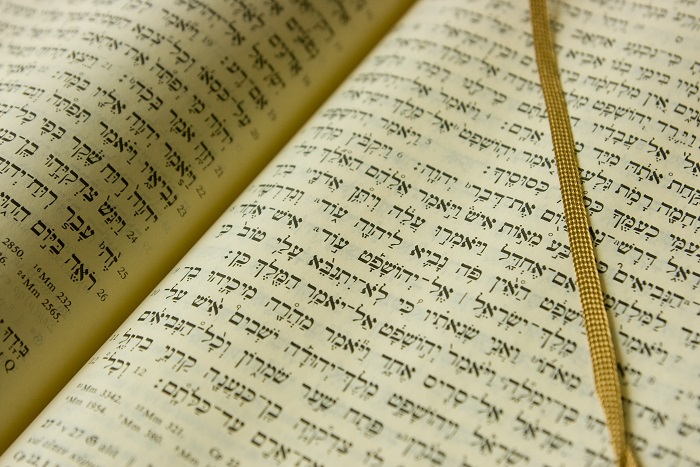The Mishnah, a collection of Jewish legal texts dating from 200 BCE, plays a central role in the history of Judaism. The Mishnah, the earliest work of the rabbinic heritage, which includes the Gemara that makes up the Talmud, may have played a more significant role in the reinvention of Judaism after the fall of the Second Temple than any other book.
However, most Jews know nothing about it. Remember, you aren’t alone if you’ve never heard of it. Notwithstanding the great importance of the Mishnah to Jewish life today and in the past, it sometimes goes completely unnoticed, so many Jews who participate in synagogue life know little about it. You can discover Mishnah study services at Chevrah Lomdei Mishnah, but first, here’s an outlook of what to expect;
Why Is So Little Attention Paid To The Mishnah?
There are several different explanations for why the Mishnah receives less attention. First, the writings are in concise, fragmentary Hebrew, sometimes confusing. Understanding the text can be challenging, even with an English translation. Second, it devotes considerable attention to several topics that seem far removed from contemporary problems, such as offerings in the Temple and ceremonial purity regulations. Moreover, the text is widely portrayed by various educators and rabbis as a collection of arcane rules – and for many people, the prospect of dealing with a bunch of legal jargon from the year 200 seems absurd.
Nonetheless, the Mishnah is transformative. It is an excellent starting point for anyone who wants to learn more about Judaism, whether from history, the present, or the future. It contains over 500 chapters, 63 tractates, and is 1,800 years old; keep reading to discover more;
click here – How Does The Process Of Running New Electric Service Work?
The Mishnah’s Six Books
The Mishnah consists of six books, including;
- The Zera’im (Seed)
It gives an overview of the agricultural milieu in which the ancient Jews lived. It also describes the essential parts of the organization of Jewish liturgy.
- Mo’ed (Seasons)
Mo’ed deals with the Jewish festival calendar, especially Shabbat, and introduces many elements that are not as present today. For example, the Mishnah formalizes the concept of the Passover seder, one of the significant events of Jewish life worldwide today.
- Nashim (Women)
This book explains how Jewish families should live. The Torah largely ignores such issues by describing what weddings and divorces entail.
- Nezikin(Damages)
It deals with civil matters among Jews and criminal justice and punishment issues. It also contains the only tractate of the Mishnah that deals exclusively with ethical issues, namely Pirkei Avot, the best-known part of the Mishnah today.
- Kodashim (Holy Things)
The Kodashim describes the sacrificial ritual of the Temple.
- Taharot (Purities)
The Tarot explains the intricate principles of ceremonial purity and impurity.
click here – Is White-Label Web Design Right For Your Business?
Minority Views And Other Mishna Factors
The Mishnah serves as the foundation of rabbinic Judaism today. In it, there are instructions for Jews on how to recite the Amidah prayer three times a day, no practice of asking the Four Questions on Passover, and no connection to the world-famous phrase: If not now, when? Over several generations and hundreds of years, a group of rabbis created a complete system of religious rules, criminal and civil regulations, and taxes, to name a few. But it is not only the rites and practices contained in the Mishnah that are worthy of mention. Its organization is at the heart of today’s Jewish heritage.
Essentially, it consists of a series of justifications supporting minority opinions primarily. It is by no means natural to associate lost viewpoints with successful ones. Most ancient and contemporary legal documents merely outline laws and procedures. However, the Mishnah’s critical decision to convey a wide range of ideas without saying who won the argument provides the framework for the rich heritage of Jewish debate that all contemporary religions cherish. In many ways, the Mishnah laid the foundation for a culture in which the adage “Two Jews, three points of view” is true. It set the stage for a faith in which deep and holy debate with others or with oneself is central.
The Significance Of The Mishnah Today
One of the most common criticisms of the Mishnah is that its last two volumes focus on material that is quantitatively irrelevant to contemporary existence. Kodashim deals exclusively with various sacrifices in the Jerusalem Temple, while Taharot deals with what Jewish rituals entail. It is a system of laws governing items considered tahor (clean) or tamei (unclean) ceremonially.
These passages may seem dated or unpleasant to some readers, but they contain some excellent concepts. For example, at one point, the daily sacrifice or tamid in the temples takes precedence over donations on special occasions, such as a vacation. Modern critics go a step further, claiming that the most mundane events – those that may seem boring or monotonous – are often the most divine.
These portions also provide an exclusive opportunity to put Lish’ma Torah into practice. Although the details of tum’ah or ritual defilement may not be necessary today, the debate over them is remarkably fascinating because of the rabbis’ detailed reasoning and detail-oriented approach.
While the Mishnah is not the best-known text of the Jewish heritage, it is a preface to the Gemara, the more comprehensive portion of the Talmud. Studying it in depth can give you the complexity and dimension of Jewish life experiences today.

